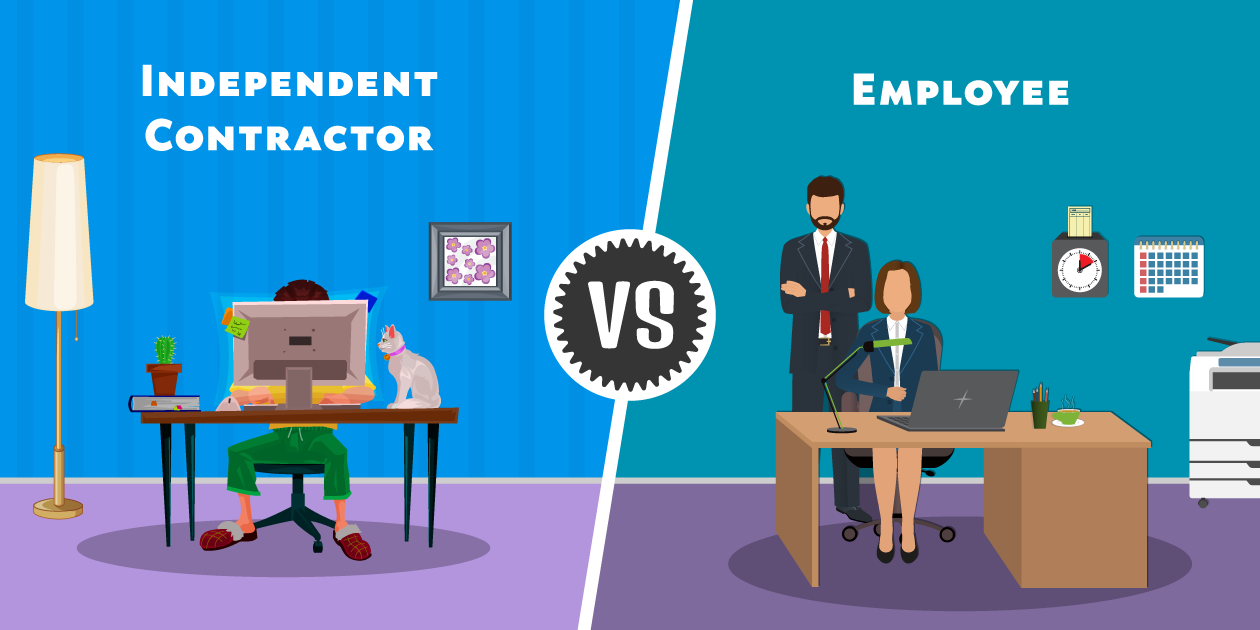Navigating Employee Misclassification

Are you feeling like you’re caught in a gray area between being an independent contractor and an employee? If so, continue reading. It’s time to unravel the complexities and explore what you can do about it.
Understanding The Issue
Picture this: You’re working for a company, contributing your time, skills, and effort just like an employee would. However, your status is labeled as an independent contractor. This isn’t just about labels; it’s about legal rights, benefits, and protections. Employee misclassification occurs when employers classify a worker as an independent contractor to avoid providing employee benefits like minimum wage, overtime pay, and other perks that employees are entitled to. This can leave you in a vulnerable position, without the safety net you deserve.
Employee Vs. Independent Contractor: What’s The Difference?

source-image
Before we jump into the steps you can take if you’re facing misclassification, let’s quickly differentiate between employees and independent contractors. Employees typically work under the direct control of their employer. They’re entitled to benefits like health insurance, paid time off, and legal protections under labor laws. On the other hand, independent contractors maintain more control over their work, often have multiple clients, and are responsible for their taxes and benefits.
Signs You Might Be Misclassified
It’s not always easy to spot misclassification, but here are some red flags that might indicate you’re being misclassified as an independent contractor:
Control: If your employer dictates when, where, and how you work, you might be more of an employee than a contractor.
Tools and Training: Are you provided with equipment, training, or resources by the company? This level of involvement can suggest an employee relationship.
Exclusivity: If you’re exclusively working for one company, yet labeled as a contractor, it’s worth looking into.
Integration: If your role is integral to the company’s operations and you’re working alongside employees, you might be misclassified.
Duration: Long-term arrangements that mimic employment might be misclassification in disguise.
Taking Action: What Can You Do?
If you suspect you’ve been misclassified, it’s time to take charge. Here’s a step-by-step guide to help you navigate the process:
Step 1: Gather Evidence
Collect all relevant documents – contracts, pay stubs, emails, and any communication that outlines your working relationship. These will be crucial in establishing the nature of your work.
Step 2: Know Your Rights
Familiarize yourself with your state’s labor laws and regulations. These laws vary, but they generally determine employee classification based on factors like control, economic independence, and the nature of the work.
Step 3: Consult Your Employer
It’s a good idea to start with an open conversation. Express your concerns about misclassification and provide the evidence you’ve gathered. Sometimes, employers might not fully understand the legal implications and could be willing to rectify the situation.
Step 4: Seek Legal Advice
If your concerns aren’t addressed or if you face retaliation, it’s time to consult an employment lawyer. They can evaluate your situation, provide legal guidance, and help you understand the best course of action.
Step 5: File a Complaint
If negotiations fail, you can file a complaint with the appropriate government agency. This might be your state’s labor department or the U.S. Department of Labor. They will investigate your case and determine if misclassification has occurred.
Step 6: Pursue Legal Action
If all else fails, you might need to consider legal action. Your lawyer can guide you through this process, which could involve filing a lawsuit to recover unpaid wages and secure the benefits you should have received.
The Benefits of Taking Action
By addressing misclassification, you’re not just standing up for yourself – you’re contributing to fair labor practices. When employees are misclassified, it not only harms them but also creates an uneven playing field for businesses that do follow the rules. By asserting your rights, you’re helping to ensure that everyone is on an equal footing.
Possible Outcomes
When you address employee misclassification, a few scenarios might unfold:
Reclassification: Your employer recognizes the error and reclassifies you as an employee. This comes with the benefits and protections you deserve.
Back Payments: In cases of unpaid wages, you might be entitled to back payments for overtime, minimum wage, and other benefits you were denied.
Legal Costs: If you take legal action and win, your employer might be required to cover your attorney’s fees and other associated costs.
Final Thoughts
Facing employee misclassification can be intimidating, but remember that you have rights. Don’t be afraid to stand up for yourself and seek the proper classification that you deserve. By taking action, you’re not just advocating for your own well-being, but for the integrity of fair labor practices as a whole. Whether you’re an employee, an independent contractor, or somewhere in between, understanding your rights is a crucial step toward a more just working environment.
Read Also:










